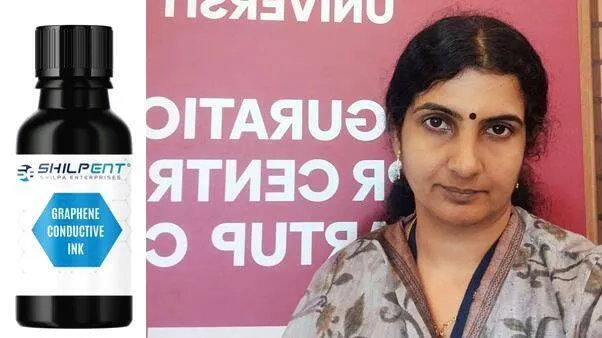

THIRUVANANTHAPURAM: Graphene, a variant of carbon, in ink form. Sticky ink can be applied to paper or cloth to conduct electricity and light a bulb. The discovery belongs to Shilpa, a native of Angamaly. She got a patent from the central government for her invention. Shilpa has a PhD in Nanoelectronics.
Graphene can provide conductivity to non-conductive materials like paper, cloth, and cardboard. Any surface that is drawn on will conduct electricity. Instead of a wire, the ink will be enough to connect a bulb to the circuit. Insulation is sprayed on the outside of the ink to prevent electrocution. There is a special pen for filling the ink.
Graphene is made from carbon. A special type of sound (ultrasonification) is passed through the powdered carbon in the lab. A binder and acrylic will be added. Up to 200 millilitres of ink can be made from 50 grams of carbon.
Ten years of effort
Shilpa, who completed her B.Tech and M.Tech in Electronics, started trying to develop graphene ink from 2015. Meanwhile, she obtained her Ph.D. In 2021, Shilpa started a company called Nanograph at Kaladi Adi Shankara College of Engineering. Krishna and Vipin Das, directors of the company, helped her. Shilpa is a native of Angamaly Nedumbassery.
Check diabetes
Conductive ink is used in glucometer strips that are used to check diabetes. When the strip is drawn with ink, it becomes electrically conductive. Then blood can be placed in it to find out the level of diabetes. Graphene ink can also be used in toys that make sound and light, mobile antennas, and electrodes used in CT scanning.
Graphene